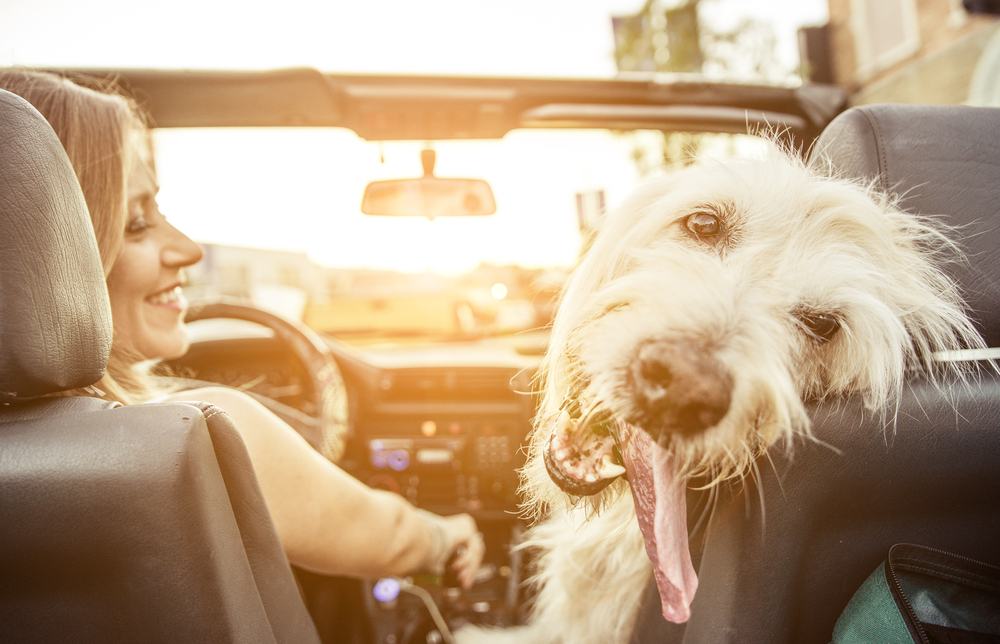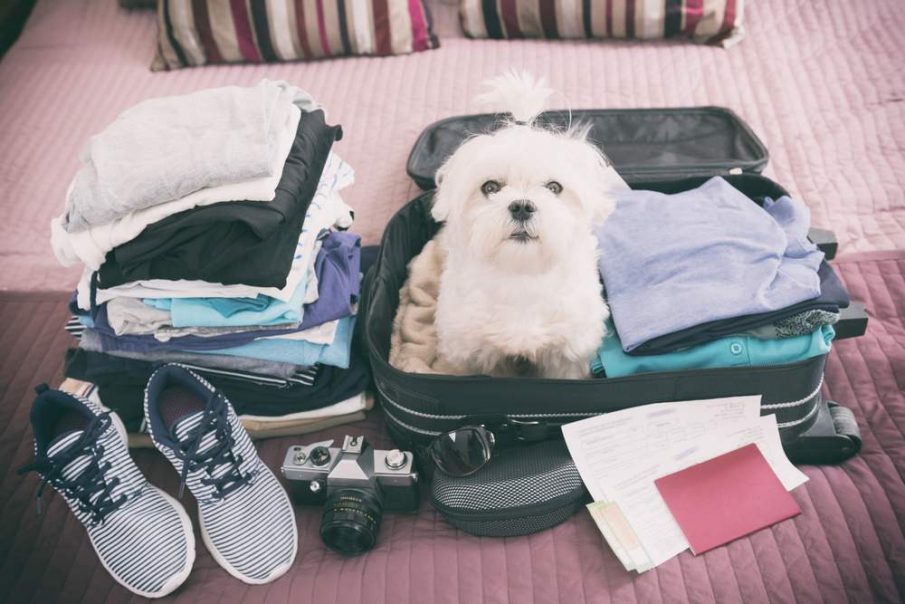Leaving your pooch behind can be agonising, even if you’re just away on a short holiday. Many dog owners choose pet sitters over navigating the complex labyrinth of regulations in place for pet travel. But we can tell you that travelling with a dog doesn’t have to be stressful if you plan ahead.
Most EU countries have adopted a harmonised set of rules to make pet movement easier within the Union. With good planning, you can make it a much more enjoyable process for both you and your dog.
Here’s everything you need to know about travelling with a dog in Europe and the United Kingdom.
Get All The Paperwork Sorted
Dogs travelling to Europe from the UK will need to obtain the following:
- A microchip
- A valid rabies vaccination
- An animal health certificate
Within the EU, an up-to-date European Pet Passport issued by the country you will be travelling to will enable pets to travel to most countries without any additional hassles. A tapeworm treatment will be required if travelling to Finland, Ireland, Northern Ireland, Norway or Malta.
Overseas travellers wanting to enter the UK with a dog need to ensure it is: microchipped, has a pet passport or health certificate, is vaccinated against rabies, and has had a tapeworm treatment. Failure to do so may result in your dog being put in quarantine for up to 4 months or refused entry on sea routes.
Dogs That Are Considered “Dangerous Breeds”
Breed-specific regulations exist in many countries across the globe when it comes to importing pets. Sadly, breeds such as pitbull terrier and Staffordshire bull terrier are considered “dangerous” in many countries in Europe and could be denied entry. There are, of course, some exceptions. If the dog is a guide dog or will be in the destination country only for a few weeks, the ban may not apply. Check with local authorities before you travel.
Consider Your Mode Of Transport
If you’re in the UK travelling to Europe, there are a few transport modes available (Air, Car, Ferry).
Air Travel
A select number of airlines allow dogs on board and the good news is that many airlines allow dogs under 10kgs in-cabin along with their owners, provided they’re in an approved pet carrier that fits comfortably under the seat in front of you. Unfortunately, larger dogs have to travel in the cargo hold as “checked baggage”.
Please note that snub-nosed breeds are banned in-flight by most airlines because they’re at a higher risk during air travel and you need to take special precautions.
If air travel is unavoidable and you have to fly with your pet, consult with your vet beforehand to make sure that your pet is healthy enough to withstand flying.
In addition, avoid sedating your dog unless recommended by an authorised vet.
Car Travel
If you’re going on a long drive, a pet seatbelt or carrier can stop your dog from moving around in the car and distract you while you drive.
If you’re travelling to/from Europe/UK via Eurotunnel, the safest way to travel with your dog is in the car, plus there are dedicated exercise areas for dogs at either side of the crossing and the journey is far shorter and cooler than the ferry. The one thing to consider is that your dog will need to remain in the car at all times.
 Ferry
Ferry
Ferry operators typically offer two options for travelling with dogs. Firstly, they may be locked in your car on the cargo hold during the entire journey. Alternatively, they may be placed into the on-board kennels. Not all ferries offer both services, so it’s important to check ahead of time and there is typically a charge for either option.
Availability Of Dog Friendly Accommodation
When searching for accommodation, look for pet-friendly options. Booking platforms will have a ‘Pet allowed’ or ‘Pet friendly’ filter you can select.
Many city-specific rental sites go a step further by flagging listings that explicitly accept pets, which is particularly useful in dense markets where options are limited. In Amsterdam, for example, the rising cost of living has made room sharing a common, cost-effective solution, and platforms that show both private and shared rooms can speed up your search. Sites like Kamernet list thousands of updated room options across the city and often indicate pet policies and instant viewing availability, helping you find a dog-friendly place without endless enquiries. Checking these details before you book reduces the risk of surprise restrictions and ensures a smoother arrival with your pet.
It’s good to check with the accommodation provider to see if there are any restrictions or additional charges. Some may charge more depending on the dog breed. While travelling across Europe will give you a chance to stay in lots of different places, you will have a narrower range of choices because of the need to make sure they’re all suitable for dogs, like these furnished apartments lisbon that can accommodate your furry friend.
5 Quick Tips For Travelling With Your Dog
- Train your dog to be comfortable with sitting in the carrier or crate (especially if the journey is long)
- Be prepared for additional costs. Some cities will require you to pay additional fees to bring your dog on public transportation.
- Check if the restaurant or cafe is pet friendly. Restaurants don’t charge for your dog, but sometimes it’s good to check ahead of time if they are dog-friendly in case you wanted to take your dog with you.
- Pack essential items like you would for yourself:
- Dog blanket
- Dog crate for the car or a safe car harness
- Water container
- Some snacks and food
- Poop bags
- Toys
- Make sure you don’t feed your dog at least 2 hours before the journey.






